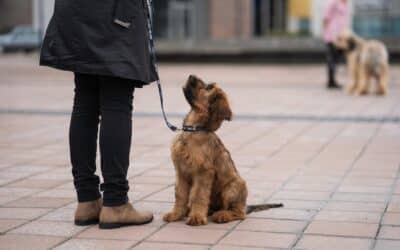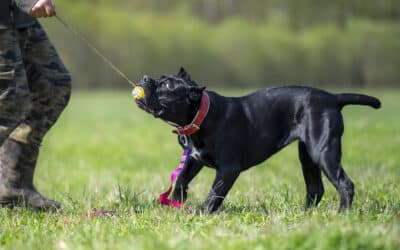Puppies are a lot of fun, but they can also get up to a lot of mischief! Having a puppy that will come to you when you call it (recall), no matter what the distraction, can save you from a lot of sticky situations.
Learn how to teach recall, with tips, videos and strategies from our experts, by joining our FREE Recall Challenge!
Step 1: Teach your puppy the value of their name
The first step in teaching your puppy to come when you call, is to teach him the value of his name. It’s not just about teaching your puppy what his name is, but also about creating a positive assosciation with the name, so that he wants to come to you every time he hears it. Even if there are other dogs, delicious smells or kids covered in ice cream nearby!
Learn more in this video:
Bonus Exercise — Teach your puppy to LOVE their collar
Teach your dog to love its collar like these two crazy pups: Turn your dog’s collar into a party hat!
Learn how with the lessons from our Puppy Training course.
Step 2: Practice!
They say practice makes perfect for a reason. Building value for coming to you happens with practice! Expose your puppy to as many different situations as possible, and in each one make sure to practice your recall. We highly recommend using a longline (or just a long leash) in any new environments to set you and your puppy up for success. That way, if the puppy doens’t respond to their name when you call, you can careful reel them in and have a party once they get there.
Puppies don’t defy you on purpose, if they don’t come when you call, you just haven’t trained this skill enough in that situation yet. The long lead helps you test your puppy’s reactions in each new environment. Once they reliable come when called, you can then start letting them off the leash if you are allowed. Any time that the dog doesn’t come when you call them. Go back to the long leash for a few sessions, so you don’t set them up to fail.
Step 3: Up the level of distraction
Challenge your puppy by changing the environments as much as you can, practice recall in the park, in the forest, at a friend’s place, at the beach…. anywhere that you can think of! The more distractions in the area (kids, other dogs, birds, food left lying around etc.) the more challenging the recall will be for your dog. Make sure to use the longline each time these situations are new for your puppy and only call their name once, if they don’re respond, reel them in with the longline and make note of that situation, knowing it is one you need to train a bit more, before it will be succesful. Never get angry at your puppy if he doesn’t come straight away, that will only cause your puppy to find you and your commands less valuable. Just put it down to a skill that needs a bit more work.
What about older dogs?
If you have an older dog that doesn’t come when you call them, we have some tips for you in this video:
Teach your puppy to come when called with easy, step-by-step instructions in the OneMind Dogs Puppy Training program
.



